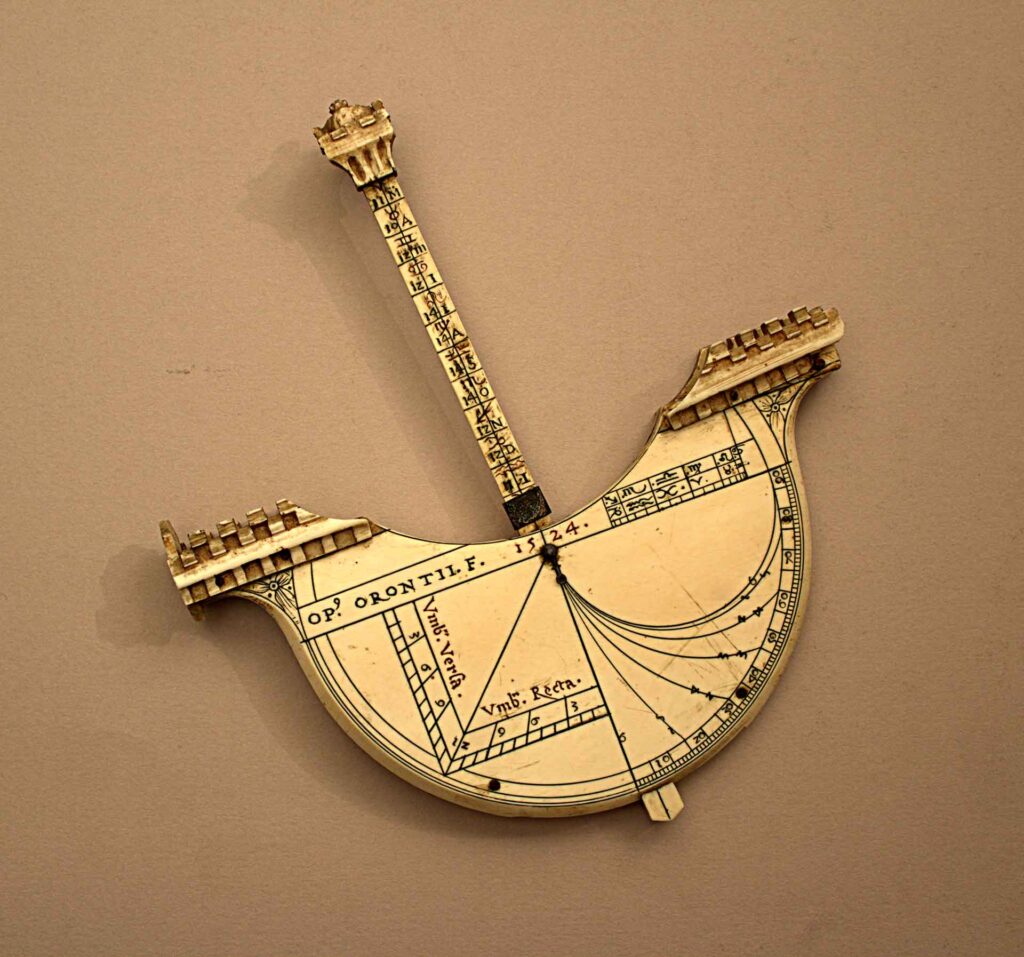Sundial called “Navicula de Venetiis”
Oronce Finé , 1524
Description

It is the best known of the more than two hundred sundials collected by Piero Portaluppi and also one of the most important for its antiquity, preciousness of material and patronage. Made in 1524 by the famous French mathematician Oronce Fine, also the author of a literary work on sundials, it was intended for the court; in fact, it bears the emblems of King Francis I (a salamander and lilies). The instrument functioned as a portable sundial: when the ship was properly oriented toward the sun a plumb line with a bead coming down from the mast cast its shadow on the dial. The hour track and two zodiac scales are engraved on the hull, while constellation signs appear along the mast. This is pivoted between the two tablets that make up the hull to be tilted according to the seasons. The name comes from the shape of the clock similar to a type of sailboat used in Venice.
Data Sheet
Author
Oronce Finé, 1494-1555
Date
1524
Material and technique
ivory
Measures
166 mm x 149 mm
Acquisition
Luisa Portaluppi donation, 1978
Inventory number
4277
location
Palma Room
The historic Palma Room constitutes the main entrance to the Trivulzio Room, which Gian Giacomo Poldi Pezzoli had chosen as the prime location for his collection of antique weapons, now displayed in the new Armory on the ground floor. The room houses a painting by Palma the Elder and the valuable collection of sundials by architect Piero Portaluppi: more than two hundred pieces that came to the Museum in 1978, five years after the substantial donation of mechanical clocks from the Falck collection on display in the Hall of Clocks.
collection
Solar clocks and scientific instruments
This collection, donated in 1978 at the behest of Lia Portaluppi Baglia Conti, was established by Milanese architect Piero Portaluppi (1888-1967) beginning in 1920. Over two hundred pieces dating from the 16th to the 19th century document the different types and functions, of these ancient time-measurers.
